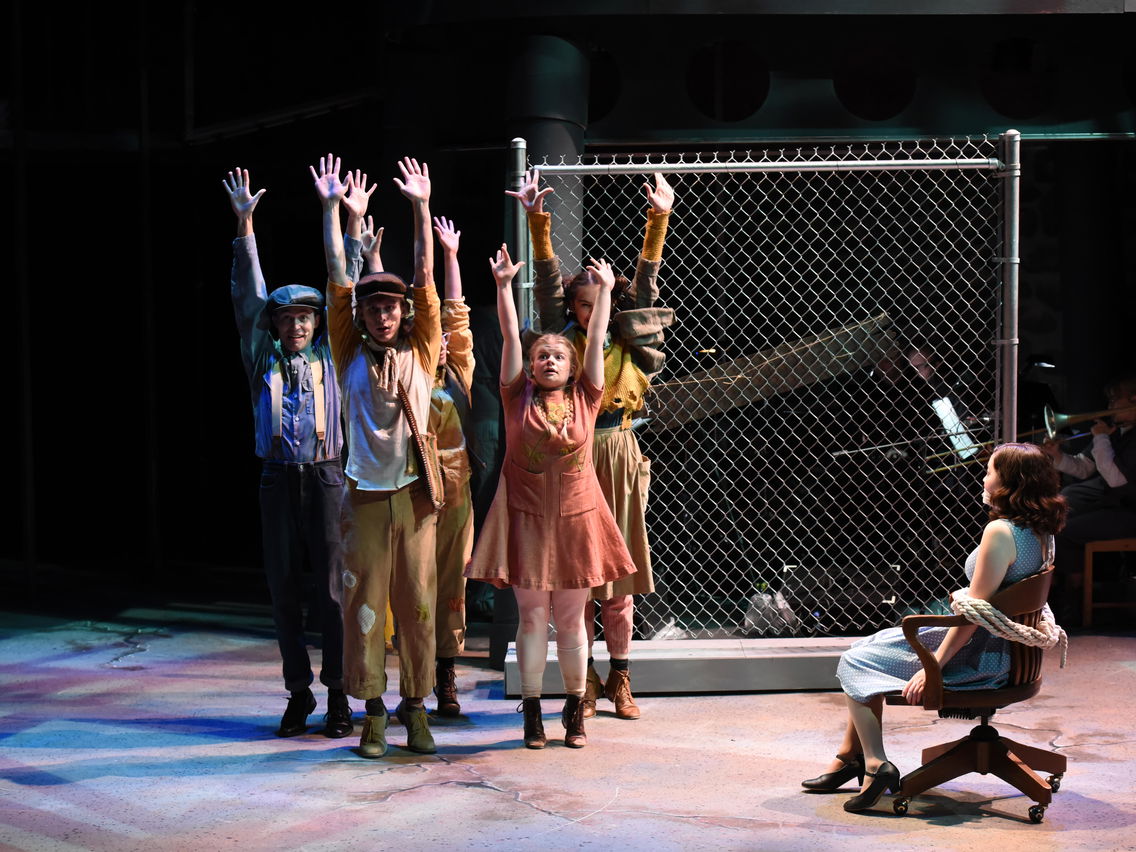
Graduate School Destinations
- Brown University
- Columbia University
- DePaul University
- NYU
- University of Washington
- Yale
Tell stories that resonate with audiences long after the final curtain. Learn your craft in a highly supportive and professional theatre program.
Undergraduate Bachelor of Arts
Major, Minor
124
4 Years
Salem

Jihan Haddad BA '16 found her place in the theater at Willamette and has gone on to perform with groups such as the Trinity Repertory Company, the American Shakespeare Center, and the Lyric Stage Company.
Connecting with visiting artists helped Jihan envision what a career in the theater could look like for her and made her excited to take on roles that challenge traditional concepts of character. Since then, she has worked steadily on the stage across the country and internationally.




Curious where this major can take you? These are the real graduate opportunities and careers our Theatre students have gone on to.


Our graduates are making a name for themselves in the performing arts. Many are pursuing their passion for theatre on the stage and screen. Others have continued their studies at top universities such as Brown, Columbia, Yale, and NYU. Learn how our alumni are impacting entertainment and art.

Willamette Theatre plays enduring role in alumna's life.
Shana Cooper ’99, a Yale-trained director reviewed by The New York Times, attributes her career success to the professional-level theater education she received at Willamette University, which led her to teaching and directing opportunities at Northwestern University.
Our theatre faculty is made up of experienced performers, directors, designers, and technicians. They bring a wealth of insight and industry connections to the program, offering students mentorship, guidance, and networking opportunities. Gain inspiration from dedicated faculty members and guest artists to pursue your career goals.
Susan Coromel boasts a prolific acting career with over 65 roles in theater, film, and summer stock. A certified master teacher in the Meisner Technique, she enhances her students' success in the performing arts.

Dr. Rachel Kinsman Steck is a professor of Theatre and a founding member of Theatre 33, a new play development company recognized by the National Endowment for the Arts. Their work spans lighting, sound, and scenic design, bringing innovative storytelling to the stage.

Rob Vaughn is the Technical Director for the Department of Theatre, specializing in scenic design, set construction, and painting. With decades of experience, he helps students build confidence in the artistic process through hands-on collaboration, bringing theatrical productions to life.

Study the great playwrights and learn the basics of stage management. Connect classroom learning to what happens on stage while gaining the skills and expertise needed to pursue a career in theatre. Learn about theatre history, develop your acting skills, and gain a working knowledge of the technical aspects of theatre production. Work on every single production we offer to prepare for a future in live entertainment.
Immerse yourself in scenic design and craft visual environments for theatre, film, and museum displays. Refine your ideas through hands‑on sketching, scale models, digital drafting, and 3‑D printing workshops.
Explore fundamental historical, theoretical, and practical aspects of play direction. Analyze director approaches, scripts, and conditions of presentation in various performance circumstances. Consider the practical application of script analysis and rehearsal techniques.
Our Theatre program requires 40-46 semester hours to complete the major, depending on the selected emphasis. It requires 124 credit hours to complete the degree. The core courses require 16 semester hours, and the selected emphasis will provide the other 24-30 semester hours.
Students pursuing a Theatre minor will need to complete 20 semester hours in designated theatre courses.

Our Theatre program is open to first-year students, transfer students and international students. Learn more about Willamette’s undergraduate admissions process to get started.

Willamette University is committed to supporting Theatre majors with generous merit scholarships and financial aid. There is no separate application required for these scholarships. All admitted undergraduate applicants are automatically considered for merit-based scholarships, starting at $28,000 per year. These scholarships are awarded based on academic excellence, taking into account cumulative GPA and SAT or ACT scores, if provided.

Willamette University